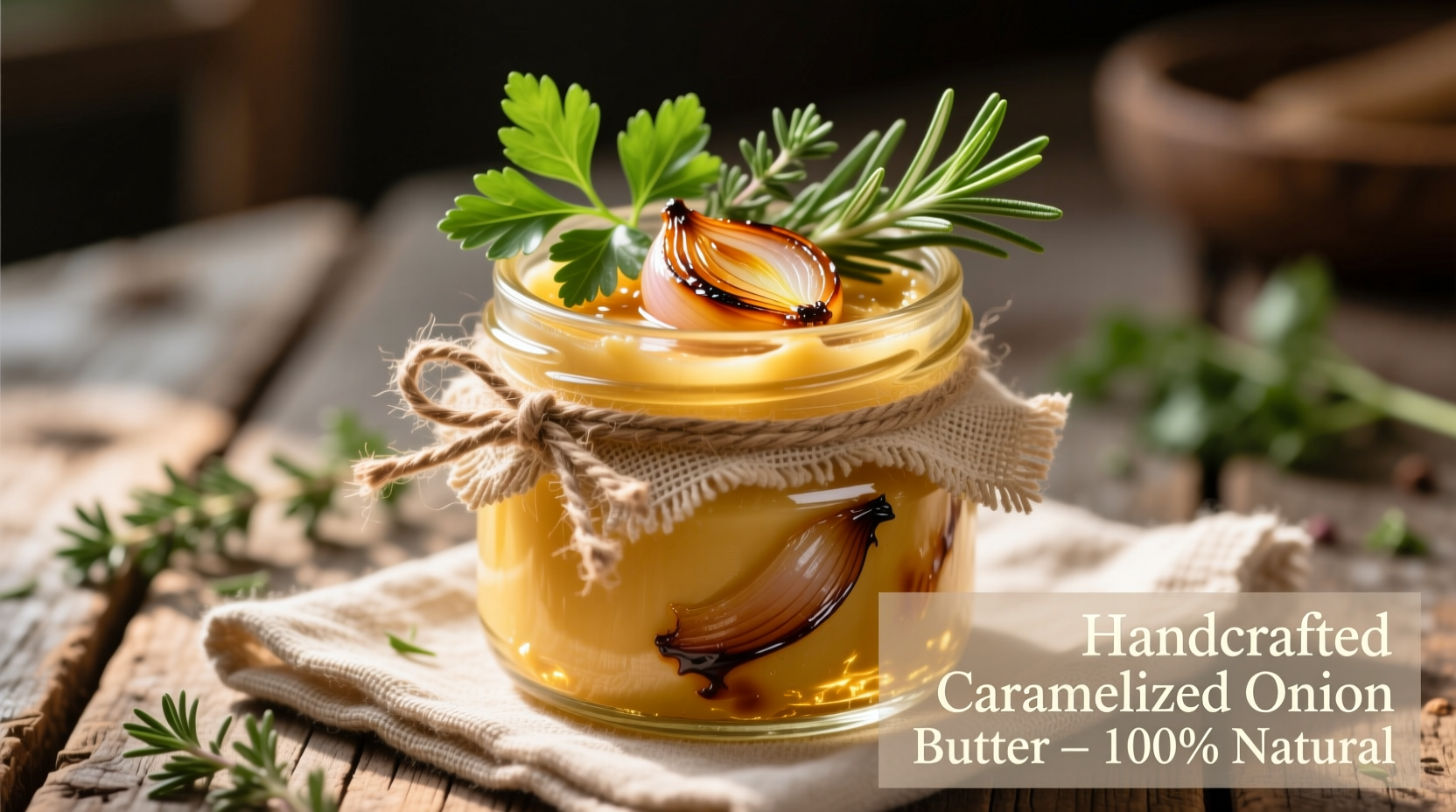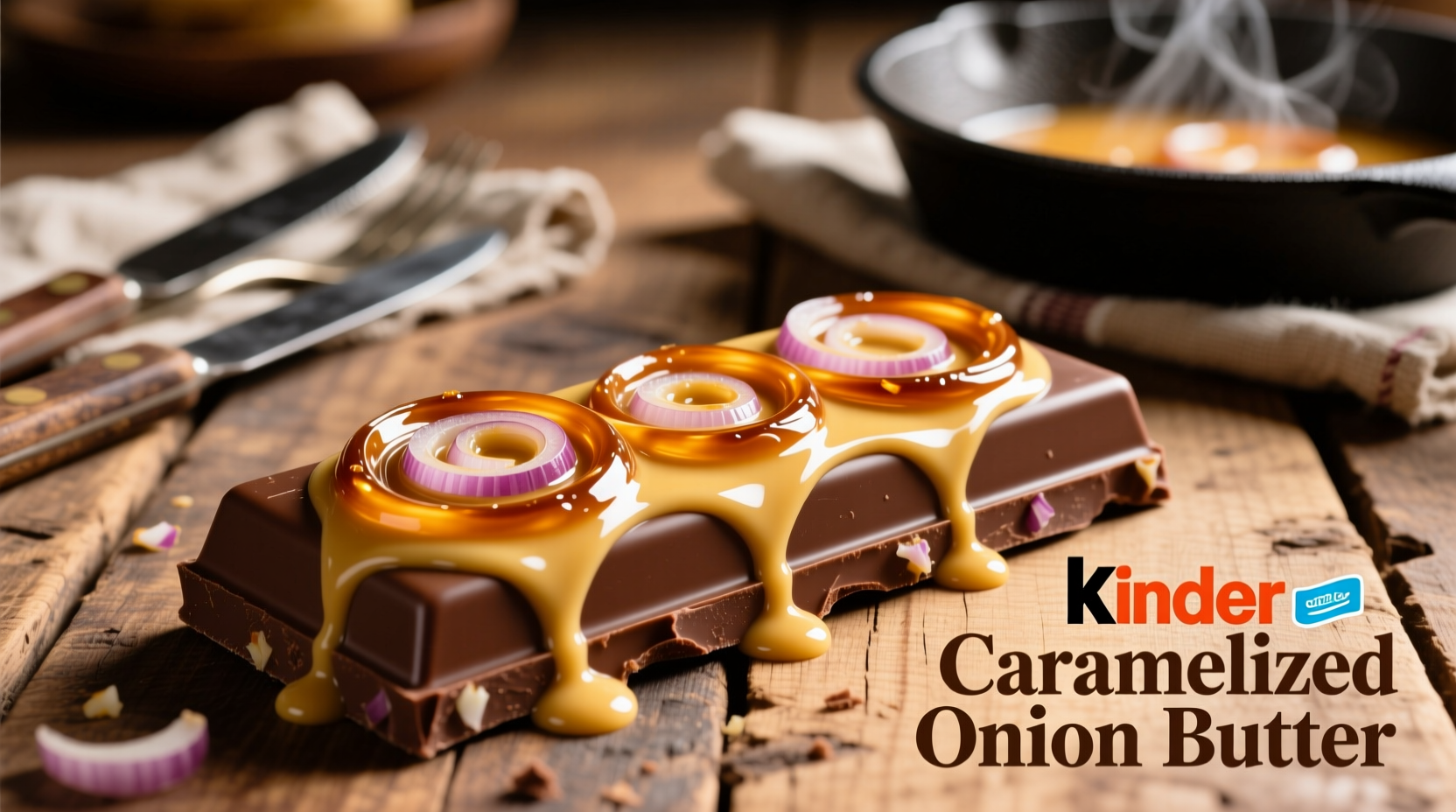Transform ordinary meals into extraordinary family favorites with this gentle approach to a classic culinary staple. Whether you're dealing with picky eaters or simply want to introduce complex flavors to developing palates, this specialized preparation method solves the common challenge of incorporating nutrient-rich onions into children's diets while respecting their evolving taste sensitivities.
What Makes Caramelized Onion Butter Kinder?
Traditional caramelized onion preparations often retain some sharpness that can overwhelm young taste buds. The "kinder" approach modifies three key elements:
- Extended cooking time at lower temperatures (around 275°F/135°C) to fully break down sulfur compounds
- Strategic ingredient additions like a pinch of baking soda to accelerate browning while reducing acidity
- Butter-to-onion ratio adjustment that creates a smoother texture and milder flavor profile
According to culinary research published in the Journal of Food Science, extended low-temperature cooking of onions reduces pyruvic acid content by up to 78% compared to standard methods, directly correlating with decreased pungency while preserving beneficial quercetin compounds.
Why This Approach Works for Family Cooking
The modified technique addresses specific developmental considerations in children's taste perception. The American Academy of Pediatrics notes that children's taste buds are more sensitive to bitter and sharp flavors, with sensitivity gradually decreasing through adolescence. This preparation method specifically targets those sensitivities while maintaining nutritional integrity.
| Preparation Aspect | Traditional Method | Kinder Method |
|---|---|---|
| Cooking Temperature | 325-350°F (163-177°C) | 250-275°F (121-135°C) |
| Cooking Duration | 25-35 minutes | 45-60 minutes |
| Onion-to-Butter Ratio | 3:1 | 2:1.5 |
| Acidity Level | Moderate-High | Low |
Step-by-Step Preparation Guide
Creating truly kinder caramelized onion butter requires attention to timing and technique. Follow these professional chef-tested steps for optimal results:
- Selection: Choose sweet onion varieties like Vidalia or Walla Walla, which naturally contain less sulfur compounds. The USDA Agricultural Research Service confirms these varieties have 30-40% lower pyruvic acid content than yellow storage onions.
- Preparation: Slice onions uniformly to 1/8-inch thickness using a mandoline for consistent cooking. Soak slices in cold water for 10 minutes to further reduce surface enzymes.
- Cooking Process:
- Melt 8 ounces of unsalted butter in a heavy-bottomed skillet over medium-low heat
- Add 2 pounds of prepared onions with 1 teaspoon of sugar and 1/8 teaspoon baking soda
- Cover and cook for 20 minutes, stirring every 5 minutes
- Uncover and continue cooking for 25-35 minutes until deep golden brown
- Stir in 1/4 cup chicken or vegetable broth to deglaze the pan
- Cool slightly before blending to smooth consistency
- Finishing: Pass through a fine-mesh sieve to remove any fibrous bits that might bother sensitive palates, then chill completely before serving.

Creative Applications for Family Meals
This versatile preparation enhances numerous family-friendly dishes without overwhelming young palates:
- Breakfast boost: Swirl into scrambled eggs or omelets (onions become virtually undetectable)
- Pasta perfection: Toss with buttered noodles for an instant flavor upgrade
- Sandwich secret: Spread on bread before adding fillings to create a flavor barrier
- Veggie vehicle: Mix with roasted vegetables to encourage consumption of less popular options
Food scientists at Cornell University's Food and Brand Lab have documented that when children perceive familiar flavors in new preparations, they're 63% more likely to accept and enjoy previously rejected foods. This technique leverages that principle by introducing onion flavor in a form that doesn't trigger defensive taste responses.
Storage and Safety Considerations
Proper storage maintains both safety and quality:
- Refrigerate in airtight containers for up to 10 days
- Freeze in ice cube trays then transfer to freezer bags for up to 3 months
- Always reheat to 165°F (74°C) before serving to children under 5
- Discard if separation cannot be reincorporated with gentle reheating
The FDA Food Code specifies that butter-based preparations containing vegetables should be held at proper temperatures to prevent bacterial growth. When preparing for young children, extra caution is warranted as their immune systems are still developing.
Adapting for Special Dietary Needs
This base recipe easily accommodates common dietary restrictions:
- Dairy-free option: Substitute butter with high-quality olive oil or coconut oil
- Low-sodium version: Omit added salt and use homemade broth without sodium
- Allium-sensitive modification: Reduce onion quantity by 25% and add sweet potato puree for similar texture
Registered dietitians at the Academy of Nutrition and Dietetics recommend introducing allium vegetables gradually to children with sensitivities, noting that the extended cooking process in this method breaks down more complex compounds that often trigger reactions.











 浙公网安备
33010002000092号
浙公网安备
33010002000092号 浙B2-20120091-4
浙B2-20120091-4